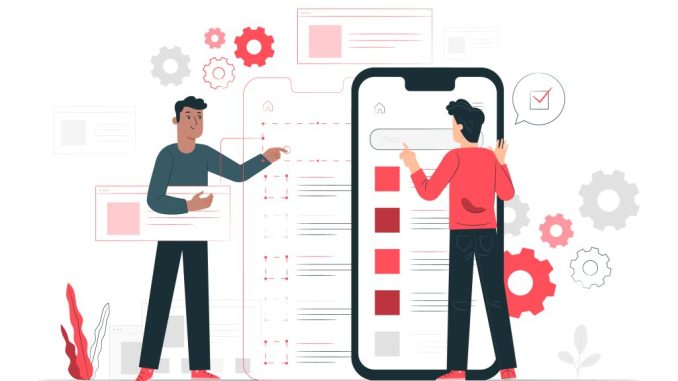
🔍 Introduction: A Shift From Ownership to Access
In a rapidly evolving digital world, the traditional idea of owning products is being replaced by the desire for access and flexibility. Subscription-based business models are at the heart of this transformation. Whether it’s software, entertainment, meal kits, or even cars, consumers in 2025 are choosing convenience, personalization, and affordability over large one-time purchases.
According to Statista, the global subscription economy is projected to exceed $1.5 trillion by 2025.
In this article, we’ll explore how subscription-based models are reshaping industries, benefiting businesses, and why customers now prefer “pay-as-you-go” services across almost every sector.
💳 1. Why Subscription Models Are Booming in 2025
Modern consumers value experiences over possessions, and flexibility over commitment. The subscription model provides:
-
Lower upfront costs
-
Easy access to high-end products/services
-
Cancel anytime flexibility
-
Personalized offerings
From Spotify and Netflix to Amazon Prime and Adobe Creative Cloud, this model has proved its resilience and adaptability across multiple industries.
76% of consumers say subscriptions make life easier, while 68% believe they offer better value for money.
🔁 2. Recurring Revenue: The Holy Grail for Businesses
For businesses, the subscription model transforms irregular cash flow into predictable, recurring revenue. This enables:
-
Accurate forecasting
-
Higher customer lifetime value (CLV)
-
Better inventory and staffing decisions
-
More strategic growth planning
“Recurring revenue is the most valuable type of income stream,” says venture capitalist Jason Lemkin.
Case Study:
SaaS company Slack increased its valuation from $1 billion to $10 billion in just 5 years, largely due to its successful subscription-based pricing model.
🧠 3. Personalization & Customer Loyalty
Subscription businesses thrive on data and personalization. By analyzing customer preferences and behavior, companies can:
-
Offer curated product recommendations
-
Predict churn risk and take action
-
Upsell and cross-sell efficiently
Example:
Dollar Shave Club uses customer data to personalize each shaving kit, increasing repeat purchases and brand loyalty.
Keywords: subscription personalization, customer analytics, churn reduction strategies
🌐 4. Industry-Wide Disruption: Who’s Subscribing?
📺 Entertainment & Media
Streaming giants like Netflix, Disney+, and Spotify pioneered the model, now evolving with tiered pricing and ad-supported plans.
🧑💻 Software-as-a-Service (SaaS)
From Microsoft 365 to Canva Pro, SaaS dominates the digital workplace with monthly pricing and cloud-based access.
🚗 Automotive
Brands like Porsche and Volvo offer car subscription services with bundled insurance, maintenance, and mileage flexibility.
🍱 Food & Meal Kits
HelloFresh and Blue Apron deliver personalized meals weekly, driving customer engagement through freshness and convenience.
🛍️ E-commerce
Amazon’s Subscribe & Save model incentivizes repeat orders with discounts and scheduling.
By 2025, over 85% of U.S. households will have at least two active subscriptions.
📈 5. Challenges of the Subscription Model
Despite its popularity, running a successful subscription-based business isn’t without hurdles:
-
Churn Management: Losing customers monthly can significantly impact revenue.
-
Over-Saturation: Too many subscriptions can overwhelm consumers.
-
Logistics & Fulfillment: Timely delivery and inventory issues can lead to dissatisfaction.
-
Free Trial Abuse: Short-term users exploit trial periods without converting.
Solutions include:
-
AI-driven churn prediction
-
Smart bundling and loyalty rewards
-
Transparent cancellation policies
🔒 6. Trust and Transparency: The Consumer’s Demand
Modern subscribers expect ethical, honest communication. In 2025, consumer protection laws now require:
-
Upfront pricing clarity
-
Easy cancellation options
-
Data usage transparency
91% of users say they are more likely to remain loyal to subscription services that offer full transparency.
🚀 7. How New Businesses Can Adopt the Subscription Model
Not just for big brands! Even small businesses can create recurring income streams:
-
Local fitness studios: Monthly memberships with on-demand video workouts
-
Coaching services: Subscription plans for personal development or career mentoring
-
Digital creators: Patreon or Substack memberships for exclusive content
-
E-commerce shops: Curated monthly boxes for beauty, fashion, or lifestyle products
Tips for Success:
-
Start with MVP (minimum viable product)
-
Focus on retention more than acquisition
-
Use tools like Chargebee, Recurly, or Stripe Billing for payment automation
🌍 8. The Global Outlook of Subscription Models
The rise of mobile-first economies in Asia and Africa has expanded the reach of subscription services. Emerging markets are seeing:
-
Mobile banking integration for payments
-
Micro-subscriptions (weekly/daily plans)
-
Localized content and pricing
Example:
India’s Hotstar offers mobile-only monthly plans under $1 — opening up access to millions of users.
💡 Conclusion: The Subscription Economy is Here to Stay
As 2025 continues to unfold, the subscription model is proving itself not just as a trend — but as a new economic standard. It benefits both businesses and consumers through:
-
Predictable revenue
-
Personalized experiences
-
Lower financial barriers
Whether you’re a multinational SaaS provider or a local entrepreneur, embracing subscriptions may be the smartest move you make this year.
“Don’t sell products. Build relationships. Subscription is the future.”